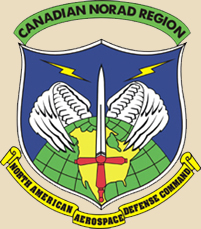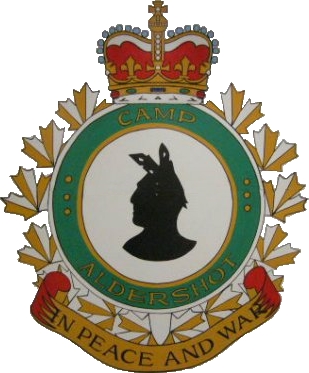This article needs additional citations for verification .(February 2012) |
44°14′30″N76°27′00″W / 44.24167°N 76.45000°W
Contents

Canadian Forces Base Kingston (also CFB Kingston) is a Canadian Forces base in Kingston, Ontario.
This article needs additional citations for verification .(February 2012) |
44°14′30″N76°27′00″W / 44.24167°N 76.45000°W

Canadian Forces Base Kingston (also CFB Kingston) is a Canadian Forces base in Kingston, Ontario.
The Barriefield Military Camp, commonly called Camp Barriefield, was established as a military base at the outbreak of the First World War in 1914 on the east bank of the Cataraqui River opposite the city of Kingston in the village of Barriefield. Located north of King's Highway 2, the name of the military base and village was in honour of the Royal Navy's Rear-Admiral Sir Robert Barrie who served during the War of 1812.
In 1937 the base expanded to the south side of King's Highway 2 with the opening of the Vimy Barracks, named in honour of the Battle of Vimy Ridge. The Vimy Barracks became home to the Royal Canadian Corps of Signals which relocated to the Barriefield Military Camp from the Borden Military Camp. The Signal Training Centre, later renamed the Royal Canadian School of Signals was also established at the base.
The Barriefield Military Camp continued to expand as one of Canada's largest training bases when the Royal Canadian Ordnance Corps established a training centre during the Second World War. Following the war, the original part of Barriefield Military Camp on the north side of the King's Highway 2 was renamed the McNaughton Barracks in honour of the Canadian Army's General A.G.L. McNaughton who served during the First and Second World Wars. From 1945 to 1969 the McNaughton Barracks were host to the Royal Canadian Electrical and Mechanical Engineers School.
The base was renamed to Canadian Forces Base Kingston (CFB Kingston) in 1966 in the lead-up to the February 1968 unification of the Canadian Army, Royal Canadian Navy and Royal Canadian Air Force to form the Canadian Armed Forces. CFB Kingston was placed under Training Command and was responsible for providing a training facilities and support services to its integral units and lodger units.
In September 1975, Training Command was disbanded and the base was transferred to Canadian Forces Training System. The Royal Military College of Canada, the National Defence College, the Canadian Land Force Command and Staff College and the Canadian Forces School of Communications and Electronics were some of the units supported by the base and under the authority of the commander of CFB Kingston. On September 1, 1988, the 1st Canadian Division Headquarters was established to serve as a staging base for the deployment of troops and materiel on active operations; in this role it supported Operation Friction which was Canada's support to the United Nations for the Persian Gulf War in 1991.
On March 30, 1995, responsibility for CFB Kingston was transferred to Land Force Command, now known as the Canadian Army (since August 2011).
On June 26, 1997, Air Command reorganized by disbanding the 10 Tactical Air Group and replacing this unit with the newly formed 1 Wing. The headquarters for 1 Wing was relocated to CFB Kingston, however, the unit's 6 tactical helicopter squadrons flying the CH-146 Griffon were spread out at Canadian Forces bases across the country.
Primarily a training base, CFB Kingston is home to the following lodger units:
CFB Kingston includes several recognized and classified federal heritage buildings on the Register of the Government of Canada Heritage Buildings. [1]
CFB Kingston received an award from the Ontario Power Authority's for their leadership in pursuing energy efficiency. CFB Kingston and Direct Energy partnered in 2005 to create the largest Federal Building Initiative project ever conducted in Canada, resulting in a $21-million energy performance contract (EPC) expected to save the base more than $2 million annually in utility costs. At CFB Kingston, energy efficiency measures cover a number of base-wide initiatives, such as lighting upgrades, improved building controls and water conservation.

Kingston is a city in Ontario, Canada, on the northeastern end of Lake Ontario. It is at the beginning of the St. Lawrence River and at the mouth of the Cataraqui River, the south end of the Rideau Canal. Kingston is midway between Toronto, Ontario, and Montreal, Quebec, and is also near the Thousand Islands, a tourist region to the east, and the Prince Edward County tourist region to the west. Kingston is nicknamed the "Limestone City" because it has many heritage buildings constructed using local limestone.

The Rush–Bagot Treaty or Rush–Bagot Disarmament was a treaty between the United States and Great Britain limiting naval armaments on the Great Lakes and Lake Champlain, following the War of 1812. It was ratified by the United States Senate on April 16, 1818, and was confirmed by Canada, following Confederation in 1867.
Canadian Forces Base Borden, formerly RCAF Station Borden, is a large Canadian Forces base located in Ontario. The historic birthplace of the Royal Canadian Air Force, CFB Borden is home to the largest training wing in the Canadian Armed Forces. The base is run by Canadian Forces Support Training Group (CFSTG) and reports to the Canadian Defence Academy (CDA) in Kingston.

A Canadian Forces base or CFB is a military installation of the Canadian Armed Forces. For a facility to qualify as a Canadian Forces base, it must station one or more major units.

The Canadian Forces Military Police provide police, security and operational support services to the Canadian Armed Forces (CAF) and the Department of National Defence (DND) worldwide.
5th Canadian Division Support Base Gagetown, formerly known as and commonly referred to as CFB Gagetown, is a large Canadian Forces Base covering an area over 1,100 km2 (420 sq mi), located in southwestern New Brunswick.

Canadian Forces Base (CFB) Halifax is Canada's east coast naval base and home port to the Royal Canadian Navy Atlantic fleet, known as Canadian Fleet Atlantic (CANFLTLANT), that forms part of the formation Maritime Forces Atlantic (MARLANT).

Canadian Forces Base Esquimalt is Canada's Pacific Coast naval base and home port to Maritime Forces Pacific and Joint Task Force Pacific Headquarters. As of 2018, 4,411 military personnel and 2,762 civilians work at CFB Esquimalt.
Canadian Forces Base Calgary, also CFB Calgary, was a Canadian Forces Base located in Calgary, Alberta.

Canadian Forces Base Trenton, formerly RCAF Station Trenton, is a Canadian Forces base located within the city of Quinte West, Ontario. It is operated as an air force base by the Royal Canadian Air Force (RCAF) and is the hub for air transport operations in Canada and abroad. Its primary RCAF lodger unit is 8 Wing, commonly referred to as 8 Wing Trenton. CFB Trenton is Canada's largest Air Force base and most southerly air base.
3rd Canadian Division Support Base Detachment Wainwright, commonly referred to as Canadian Forces Base Wainwright or CFB Wainwright, is a Canadian Forces Base located in Denwood, Alberta, adjacent to the town of Wainwright.

Canadian Forces Base Winnipeg is a Royal Canadian Air Force base located within the City of Winnipeg, Manitoba. Co-located at the Winnipeg James Armstrong Richardson International Airport, CFB Winnipeg is home to many flight operations support divisions, as well as several training schools. Its primary RCAF lodger unit is 17 Wing, commonly referred to as 17 Wing Winnipeg.
Canadian Forces Base London is a former Canadian Forces Base that was located in London, Ontario, Canada. It was downsized and closed during defence budget cutbacks in the 1990s. Local Primary Reserve units were supported by Area Support Unit (ASU) London which was located in some of the remaining base buildings, but they are now supported by ASU Toronto. Much of this support is delivered by a Technical Services Platoon which remains stationed in London.

5th Canadian Division Support Group Detachment Aldershot is a training facility for 5th Canadian Division of the Canadian Army. It is located in Kings County, Nova Scotia.
The Peace Support Training Centre, is at McNaughton Barracks, CFB Kingston, Ontario, Canada, and is a subordinate unit of the Canadian Army Doctrine and Training Centre. PSTC delivers training to the Canadian Armed Forces (CAF), other Canadian government departments (OGDs), and foreign militaries. PSTC is also engaged in instructor exchanges with ABCA, NATO, and other countries.
Point Frederick is a 41-hectare (101-acre) peninsula in Kingston, Ontario, Canada. The peninsula is located at the south end of the Rideau Canal where Lake Ontario empties into the St. Lawrence River. Point Frederick is bounded by the Cataraqui River to the west, the St. Lawrence River to the south, and Navy Bay to the east. The peninsula is occupied by the Royal Military College of Canada (RMC). Several of the buildings located on Point Frederick and the site of the old naval dockyard are national historic sites. Fort Frederick, at the south end of the peninsula, is a feature of the Kingston Fortifications National Historic Site of Canada.

The Combat Training Centre is responsible for the individual training of Canadian Army soldiers and officers in military occupational classifications that are controlled by the Canadian Army. The centre is headquartered at the 5th Canadian Division Support Base Gagetown, New Brunswick, and maintains schools at CFB Kingston, 8 Wing Trenton and CFB Borden in Ontario. Originally known as the Combat Arms School, it was formed at Camp Borden, Ontario, in 1965, moving to CFB Gagetown in the early 1970's. It is a formation of the Canadian Army Doctrine and Training Centre, the former Land Force Doctrine and Training System which was renamed as part of the reorganization of the Canadian Army on 18 July 2013.
The following is a hierarchical outline for the Canadian Armed Forces at the end of the Cold War. It is intended to convey the connections and relationships between units and formations.
HMCS Cataraqui is a Canadian Forces Naval Reserve Division (NRD) located in Kingston, Ontario. Dubbed a stone frigate, HMCS Cataraqui is a land-based naval establishment for part-time sailors as well as a local recruitment centre for the Royal Canadian Navy (RCN). It is one of 24 naval reserve divisions located in major cities across Canada.
The Band of the Royal Canadian Corps of Signals was a regimental military band in Canada based out of Canadian Forces Base Kingston in Ontario. It is a voluntary band, which means that its band members are not composed of full-time professional musicians. The band provided musical support for the community in the Kingston, Ontario metropolitan area as well as Ottawa–Gatineau.